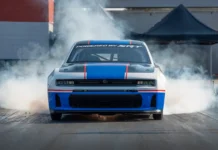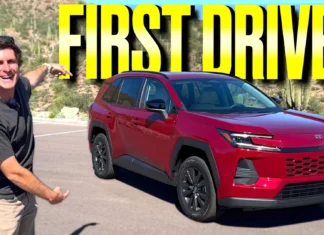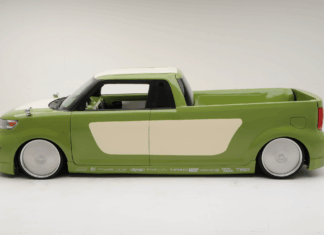
It’s been a roller coaster for used car buyers these past few years.
As we rolled through 2022, those wanting to stretch their budget (or just find the car that actually fits their needs) on the used car market could breathe a sigh of relief. After facing months and months of sky-high prices, retail prices dropped precipitously — a sign of sanity returning to this crazy, crazy world. But don’t unbuckle your seat belt just yet…because prices are actually jumping back up once again.
So, what is going on? A CBS News report delved into the details, kicking off with wholesale prices for used cars being sold at auction. Those prices actually spiked up by a handful of percentage points over the past few weeks. That typically has a knock-on effect for consumer pricing, with the sudden jump taking some by surprise.
As used car prices fell last year and dealers started getting a steady supply of new inventory again, they pulled back purchasing on used cars. For reference, used car prices were down nearly 12% from early 2021, according to the Consumer Price Index.
With a strong job market— employers added half a million jobs in January 2023 alone — and strong demand, however, dealers have been caught flat-footed. They’re scrambling to shore up their inventories, and that is once again driving used car prices northward.

COVID-related production issues are catching up to the used car market
There are a few other factors still to consider when looking at the current trend in used car prices. The Fed’s decision to stage multiple interest rate hikes to curb inflation last year certainly made the prospect of buying any vehicle less appealing. While the drop in used car prices over the past several months looked promising (as in the rate hikes are having their intended effect), the effects of lockdowns early on in the COVID-19 pandemic also aim to derail that trend.
Why? Automakers widely shut down production for weeks, if not months, particularly in March and April of 2020. Demand for cars plummeted amid record job losses, and far fewer people signed onto leases for what few brand-new vehicles were actually making it out into the market at the time.
Fast forward three years — when those lease vehicles would typically hit the used car lots — and there’s hardly any inventory. “We are entering a period of tight supply on 3- and 4-year-old vehicles, which make up the majority of used car sales,” said AutoNation and former Stellantis CEO Mike Manley. “And that’s going to impact wholesale prices and ultimately, retail prices.”
As ever, several factors, some even conflicting (at least under normal circumstances), make the used car market difficult to predict moving forward. We’re entering the heart of “used car season”, as folks get their tax refunds, and all the elements at play suggest you may not have an easy time landing a solid deal on a solid used car.
“I don’t think this latest increase is a blip,” said Cox Automotive senior industry insights manager Chris Frey. “We did not anticipate that prices would jump as much as they have.”

Some anecdotal evidence
Apart from the analysts’ findings, I wanted to share a couple examples of the used car pricing hikes in action.
Last week, the TFL team traded in our 2021 Ford Bronco First Edition, which we bought in July 2021 for $63,200 (plus taxes). 18 months later, we were able to trade the vehicle in at a local Ford dealer for more than the original MSRP. Sure, that was the name of the game a year or so ago, but the fact that you see more and more Broncos on the road and this trend is still kicking shows we’re not out of the woods and back into “normal” used car pricing territory yet.
Just out of curiosity, I checked Kelley Blue Book, NADA and Edmunds appraisal values for my own car: a 2021 Mazda3 hatchback. When I bought the car in May 2021, it carried an MSRP of $28,995. After two years, KBB and NADA concurred on a trade-in value around $24,500, or about 85% of its new MSRP. What’s more, that value actually increased by nearly $600 over the past two weeks.
So, is there any hope in the near future?
Well, yes and no, depending on what you can financially accommodate.
Certain automakers are offering relatively low interest rates (between 0% and 2.99%), but only on a 36-month loan. Cashback deals are definitely rarer than in past years. Jeep is one of the few that is offering some bonus cash, while they’re still working to conquest competitive brand owners into their vehicles with $4,000, so there is still some money on the hood depending on what you’re looking for.
Still, the days of 0%, long-term loans are still decisively in the rear view. Sticking with Jeep, their financing offer on a 2022 Wrangler amounts to 7.26% for five years. If you go for, say, a $46,195 Rubicon, that’d see you paying a whopping $9,000 in interest over the life of the loan.
Should you do it? That’s really up to you, but just be aware: Even buying a used car will still be a relatively expensive prospect for some time to come. There are still some reasonably affordable cars out there, as we aim to cover in the video below:
























